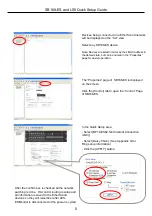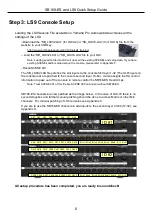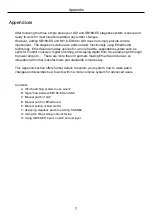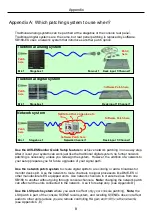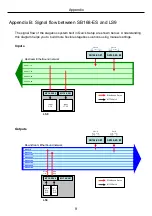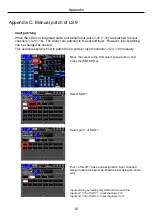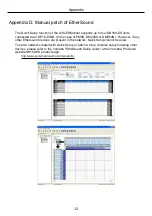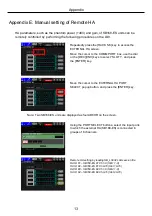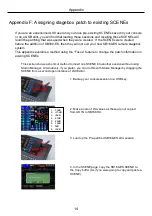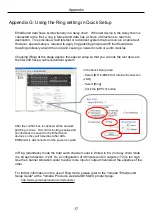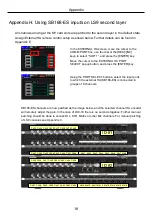
17
Appendix
EtherSound data flows bi-directionally in a daisy chain. If the last device in the daisy chain is
connected to the first, a ring is formed and data has a choice of directions to reach its
destination. This provides a fault tolerant or redundant system that can survive a cable fault.
However, special setup is required to apply ring patching and prevent EtherSound data
traveling endlessly around the loop and causing a network crash or audio crackles.
Choosing [Ring] at this stage applies this special setup so that you can link the last device to
the first and have a cable redundant system.
In Ring redundancy mode the total audio channel count is limited to 64. (In daisy chain mode
it is 64 each direction =128) So a configuration of 48 inputs and 24 outputs (=72) is too high.
Use the Channel Allocation slider to allow more input or output channels at the expense of the
other.
For further information on the use of Ring mode, please refer to the Yamaha "EtherSound
Setup Guide" at the Yamaha Pro Audio website SB168-ES product page:
http://www.yamahaproaudio.com/products/
Appendix G: Using the Ring setting in Quick Setup
In the Quick Setup area
- Select [MY16-ES64 Slot Internal Connection
(LS9)].
- Select [Ring].
- Click the [APPLY] button.
After the confirm box is checked all the network
patching is done. HA control routing is setup and
all information is saved to the EtherSound
devices so they will remember after AVS-
ESMonitor is disconnected or the power is cycled.



